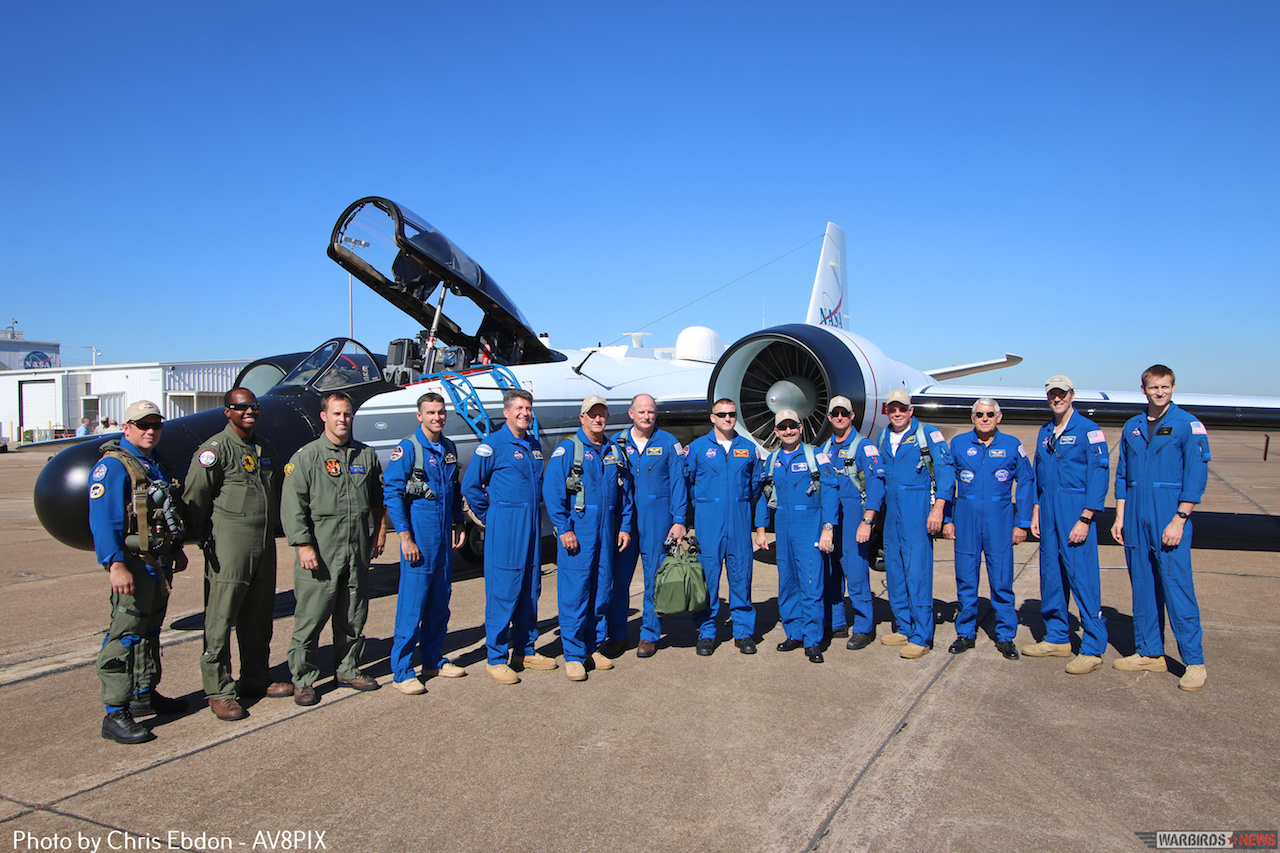On Thursday, November 20th, NASA held a unique event, flying their three operational Martin WB-57 Canberras in formation over their home base in Houston, Texas. Experienced aviation photographer and WarbirdsNews contributor, Christopher A. Ebdon of AV8PIX was amongst a small group of media personnel invited to witness this historic event up close and personal. We thought our readers would enjoy seeing some of the results of Ebdon’s efforts.
NASA’s Martin Canberras represent the last of the breed still in active service. Their enormous wingspan allows them to fly into the stratosphere, as high as 70,000′, where they can linger for extended periods with their 6.5hour endurance and 2,500mile range. Their specialized sensors suits are used for many different research projects, but one typical mission involves measuring atmospheric conditions above hurricanes to allow for better understanding and modeling of the giant storms. Our readers may also remember a pair of the aircraft deploying to Afghanistan a few years back to form part of the Battlefield Airborne Communications Node system linking troops on the ground to the various airborne assets at their disposal.
However, the three-ship formation flight over the Houston region had a very different purpose. This was the very first time that all three airframes had been in formation together. It was essentially a publicity exercise for NASA. The aircraft flew low over the area; low enough for the public below to witness the unusual aircraft and photograph them easily. Their route took them over Bush Intercontinental Airport, NRG Stadium, Houston city center, the San Jacinto Monument and NASA’s Johnson Space Center.
“Our primary missions are airborne science and technology development,” said Tim Propp, deputy chief program manager for the aircraft at NASA. The Canberras have been serving in this role since the late 1960s. They most recently flew sampling missions over Hurricanes Joaquin and Patricia, providing real-time modeling data to storm scientists trying to predict the hurricane strength and path. A veteran NASA Canberra pilot, Scott Reagan, speaks very highly about the essential nature of the mission, and the aircraft’s unique ability to capture this high-altitude data. He also noted that, “I was the highest person toward the stars than anyone else on the planet. On a clear day, if you are that high up, you can actually see the curvature of the Earth and the clouds below look like you’re in space almost. Its a unique experience.” NASA’s official uses for the Canberras range from atmospheric and Earth Science Research, cosmic dust collection, rocket launch support, and research and design test bed operations for airborne and space-borne systems.
Until fairly recently, NASA flew just two of the WB-57s from their base at Ellington Field in Houston, Texas. But in 2013, after a two-year restoration, they returned a third example to the skies, 41 years after it was mothballed at Davis-Monthan AFB in Tucson, Arizona. A couple of other WB-57s remain in storage at Davis Monthan, although it seems unlikely that these will serve as anything more than as parts sources for maintaining the small active fleet. To learn more about the NASA Canberra fleet, please click their official site HERE.
WarbirdsNews wishes to thank Christopher Ebdon for his marvelous images. Please check out his FlickR stream HERE.




























